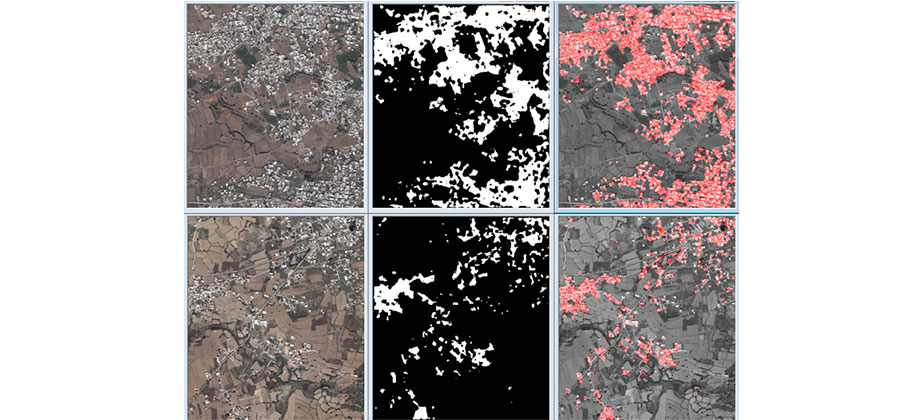


Indian Journal of Science and Technology
Year: 2020, Volume: 13, Issue: 17, Pages: 1786-1794
Original Article
Khurum Nazir Junejo1∗
1 Program Architect, Ibex Global, Centre Point, Shaheed e Millat Expressway, Karachi, Pakistan. Tel.: +92-333-308-2902
∗Corresponding author:
Khurum Nazir Junejo
Program Architect, Ibex Global, Centre Point, Shaheed e Millat Expressway, Karachi, Pakistan.
Tel.: +92-333-308-2902
Email: [email protected]
Received Date:07 May 2020, Accepted Date:14 May 2020, Published Date:15 June 2020
Background/Objectives: To determine the land use/cover from satellite imagery using image enhancement, image processing, and supervised machine learning techniques. This land usage will help in land use policy development, disaster assessment, planning of urban infrastructure, forest and agriculture monitoring and conservation. Methods/Statistical analysis: A pixel-based supervised hybrid machine learning approach is used that combines parametric density estimation followed by a k-nearest neighbor (k-NN) classifier to predict whether a particular pixel belongs to a nucleated village or to a field, forest, river, or some other terrain from satellite images. Spatial and texture features derived from the images are used as features for the models. Free satellite images crawled from Google EarthTM are hand labeled to serve as the ground truth for training and testing Models. Models are evaluated using four-fold cross validation. Comparison with other related techniques is also presented. Findings: Our experiments suggest that instead of using pixel intensity values as features, the intensity values after edge detection give better prediction accuracy. The parametric density estimation for the two classes is better modeled as Rayleigh distribution than as a normal distribution. Smoothing further helps improve the accuracy of the models. Passing the prediction of the parametric density estimator classifier through k-NN further reduces the error by removing the salt-and-pepper effects. Effects of using different size and number of smoothing filters is also discussed. Additionally, different parameters for k-NN were also evaluated to find the best models. The model was successful in achieving a very high accuracy of more than 97% with a very small false positive rate. The results demonstrate the successful discrimination of land cover of towns and nucleated villages from the surrounding terrain. Novelty/Applications: A pixel-based hybrid approach is proposed to improve accuracy of land cover classification. The proposed features and image enhancement techniques also help improve the prediction significantly. Using the proposed technique, the covered area of nucleated villages/towns can be determined for assessing the growth of towns/villages, for better of planning of urban infrastructure and land use policy, for disaster assessment, and forest and agriculture monitoring and conservation.
Keywords: Land cover classification; land usage classification; satellite image classification; nucleated village segmentation
© 2020 Junejo. This is an open access article distributed under the terms of the Creative Commons Attribution License, which permits unrestricted use, distribution, and reproduction in any medium, provided the original author and source are credited.
Published By Indian Society for Education and Environment (iSee)
Subscribe now for latest articles and news.